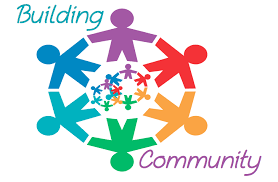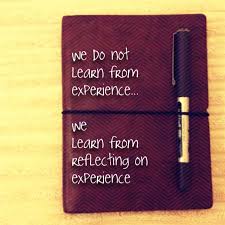Day 31
Well, here I am on May 31, 2016 deciding how to wrap up my “One a day in the month of May” self-imposed blogging challenge. Like most days this month, I’ve been on high alert for “blog-worthy” moments and today did not disappoint.
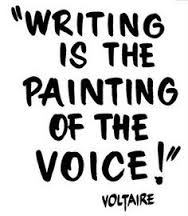
Today’s post could have easily been focused on the meeting that I had with a former student who has just graduated from Teacher’s College and is getting ready to apply for a position in our board as an Occasional Teacher. We reviewed and refined her resume and cover letter and talked about potential additional qualifications and next steps. I know, as teachers, that we’re really not supposed to have favourites… but if I did, she would be at the top of my list and I couldn’t be more thrilled that she has chosen education as a career path.
Or, I could have chosen to, once again, share the pleasure that I experience each time I get the opportunity to engage in meeting new teachers when they are applying for positions. Tonight we were interviewing for summer school ESL teaching positions and the depth of knowledge, understanding, compassion and asset-stance lens that many of these potential candidates spoke from made me proud to know that many students will be able to benefit from spending time with these educators.
Or today’s post could have been a recount of a leadership challenge of how to share potential changes with team members. That is a skill that I continue to work towards refining. Conversations never play out the same way that they do in my mind and at times, reactions are hard to anticipate.
Or I could have written about the sheer pleasure that I get from knowing that when a team member is having a good day, they take the time to come and share. Today, the office was filled with lots of “Aujourd’hui est une très bonne journée”
Or I could have written about how one team member shared that she was enjoying my daily blogs as it gave her a chance to “interact” with me on a daily basis ~ in knowing that in our two roles, being in the same building happens maybe once or twice a month and therefore time to interact on various topics of learning are limited. This team member faithfully commented each morning.
But instead, I took some time to reread last May’s daily posts, especially the final one wherein I took the opportunity to thank those contributors who commented, liked, retweeted or added a quote to each of the daily posts. Once again, I find myself indebted to those readers who took the time to read my daily posts and then to engage in conversations about the topic (either online or in person). My dad even sent me an email, following the Twisted Sister post. As a result of a reader sending one of my posts to Sandra Brown the author, she took the time to read the post, send thanks and a comment. Even Dee Snider from Twisted Sister took the time to challenge my ideas, but admit that the post was “Still cool”! It’s those “Superstar” moments that continue to remind me of the power of hitting the publish button and it’s a power that is available to each and every one of our students (and educators too…..)

As I critically analyzed and compared last year’s writing to this year’s, my initial thoughts were that I did not progress as much as I would have liked as a writer. But to be honest, I’m not sure what my expected outcome was ~ other than 31 posts in 31 days.
I’ve come to the conclusion that, for me, one’s writing doesn’t magically improve. Some days the words flowed, the well-crafted phrases eased the transition from one thought to the next, the analogies bubbled through my brain so voraciously that I just needed to select the most effective one and the ideas came forth faster than my fingers could type away on my keyboard. But then other days (usually as I was feeling the pressure of the impending stroke of midnight) it was much more challenging and I sheepishly hit the PUBLISH button knowing that it wasn’t my best work, but it was something ~ it was a record of something that resonated with me that day.
So for my faithful readers this month…..A sincere thank you!!


 Once again, on the recommendation of one of my colleagues, I’m becoming consumed by a fantasy infused historical fiction book entitled Echo and written by Pam Munoz Ryan. As one of the first main characters is provided with the opportunity to work at the factory with his father, images of corrupt factory owners immediately creates a connection to the miners in Ken Follet’s
Once again, on the recommendation of one of my colleagues, I’m becoming consumed by a fantasy infused historical fiction book entitled Echo and written by Pam Munoz Ryan. As one of the first main characters is provided with the opportunity to work at the factory with his father, images of corrupt factory owners immediately creates a connection to the miners in Ken Follet’s
 As my little grey car made its way up the winding curves of “Snake Hill” on my way to today’s Google Summit, for just a split second I was transported back in time (about 30+ years) to when I was driving, yet another little grey car (a ’73 Ford Cortina) up the same hill on my way to high school ~ wishing each time that the clutch didn’t slip and that I wasn’t going to be responsible for a long line up of vehicles behind me. As a former Saunders Sabre, this weekend I was a useful traveling companion as I knew the fastest route to the cafeteria, the numbering system for the classrooms and which seats in the auditorium gave you the best view.
As my little grey car made its way up the winding curves of “Snake Hill” on my way to today’s Google Summit, for just a split second I was transported back in time (about 30+ years) to when I was driving, yet another little grey car (a ’73 Ford Cortina) up the same hill on my way to high school ~ wishing each time that the clutch didn’t slip and that I wasn’t going to be responsible for a long line up of vehicles behind me. As a former Saunders Sabre, this weekend I was a useful traveling companion as I knew the fastest route to the cafeteria, the numbering system for the classrooms and which seats in the auditorium gave you the best view.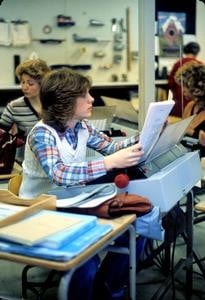 It was in typing class with Mr. Costello where we thought that we were actually using “technology”. And yet again, it was very controlled. We started the year with “aaa sss ddd fff” and by the end of the year if we were able to type “The quick brown fox jumps over the lazy dog” we had reached mastery. I guess that is as creative as one can get with a typewriter.
It was in typing class with Mr. Costello where we thought that we were actually using “technology”. And yet again, it was very controlled. We started the year with “aaa sss ddd fff” and by the end of the year if we were able to type “The quick brown fox jumps over the lazy dog” we had reached mastery. I guess that is as creative as one can get with a typewriter.

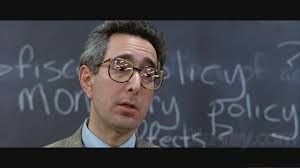

 Today, with a little help from my friend, in the midst of a complex and intense Ministry discussion (with leads from various boards and Karen Gill, directly from the Ministry) about the Renewed Mathematics Strategy, we broached the subject of competing interests and more specifically how do we ensure that educators continue to focus on strong pedagogical strategies in the area of literacy when at every turn “Math is the Main Thing”. No sooner was the question out of our mouths, when a collective head nod of agreement from everyone around the table occurred. I was thrilled to learn that Adolescent Literacy (gr. 7-10) is still a top priority and funding for special Ministry projects had just been released yesterday. But I continued to push the conversation and asked, “But what our K-6 learners”?
Today, with a little help from my friend, in the midst of a complex and intense Ministry discussion (with leads from various boards and Karen Gill, directly from the Ministry) about the Renewed Mathematics Strategy, we broached the subject of competing interests and more specifically how do we ensure that educators continue to focus on strong pedagogical strategies in the area of literacy when at every turn “Math is the Main Thing”. No sooner was the question out of our mouths, when a collective head nod of agreement from everyone around the table occurred. I was thrilled to learn that Adolescent Literacy (gr. 7-10) is still a top priority and funding for special Ministry projects had just been released yesterday. But I continued to push the conversation and asked, “But what our K-6 learners”?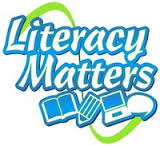

 Today I had the opportunity to spend time with members of our senior team as well as most of our Curriculum Learning Supervisors at a session entitled, “Deliberate and Consistent Use of Multiple Sources of Evidence To Inform Decisions”. It is a part of the Strong Districts and their Leadership modules being developed by Ken Leithwood and Catherine McCullough.
Today I had the opportunity to spend time with members of our senior team as well as most of our Curriculum Learning Supervisors at a session entitled, “Deliberate and Consistent Use of Multiple Sources of Evidence To Inform Decisions”. It is a part of the Strong Districts and their Leadership modules being developed by Ken Leithwood and Catherine McCullough.
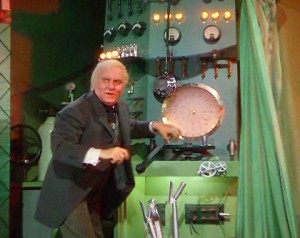 When Dorothy and her friends finally reach the hall of the Great and Powerful Oz, Toto uncovers the truth behind the curtain, as there stands a flustered man trying his best to give the illusion that Oz is in control and capable of solving their individual problems ~ a trip home, a heart, a brain and courage. As the well-known story draws to a conclusion, the reader/audience joins Dorothy in her discovery that she had the answer all along and that with each obstacle that she encountered in her journey, she not only became more determined for herself, but she started to feel responsible for the dreams of the Scarecrow, Tinman and Lion.
When Dorothy and her friends finally reach the hall of the Great and Powerful Oz, Toto uncovers the truth behind the curtain, as there stands a flustered man trying his best to give the illusion that Oz is in control and capable of solving their individual problems ~ a trip home, a heart, a brain and courage. As the well-known story draws to a conclusion, the reader/audience joins Dorothy in her discovery that she had the answer all along and that with each obstacle that she encountered in her journey, she not only became more determined for herself, but she started to feel responsible for the dreams of the Scarecrow, Tinman and Lion. Clicking our heels three times, may not get us to where we want to be ~ but believing in ourselves as educators, knowing that what we do (when it’s done intentionally and based in sound pedagogy) will have a positive impact on a student and acknowledging the challenges of others as they make their way on their own journey will get us much closer to the where we need to be.
Clicking our heels three times, may not get us to where we want to be ~ but believing in ourselves as educators, knowing that what we do (when it’s done intentionally and based in sound pedagogy) will have a positive impact on a student and acknowledging the challenges of others as they make their way on their own journey will get us much closer to the where we need to be.